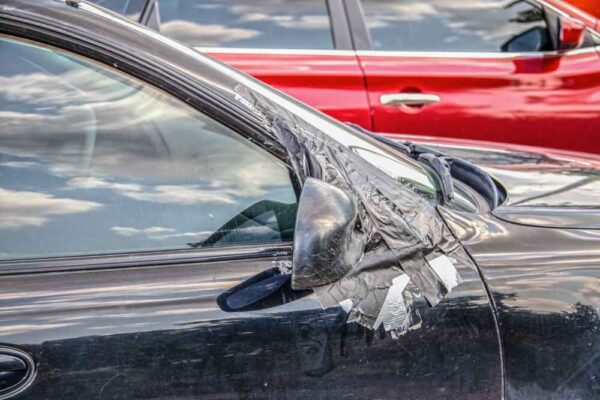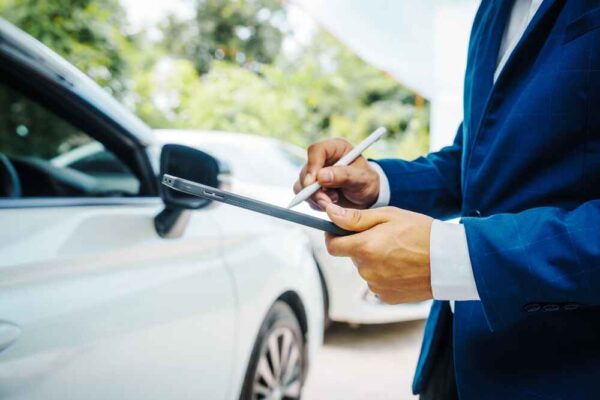
Least Depreciating Cars in Canada
What is Car Depreciation in Canada?
As every driver knows, new cars lose their value as soon as you drive them on the road. On average, a car loses 30% of its value once it leaves the dealership; the depreciation rate increases over time.
Car depreciation refers to the difference between the amount you paid for the vehicle and its current value. Good (or bad) news is that not all cars have the same depreciation rate. Some cars, like exotic cars, for example, hold their value longer than others, but they still lose some of their worth when they are sold.
In this guide, we will go through why depreciation happens, cars with the most and least depreciation rate, and how to upkeep your car to maintain its value for a long time.
How Does Car Depreciation Affect Your Insurance?
Car depreciation directly impacts your insurance coverage, particularly when it comes to claims. As your vehicle loses value over time, insurers typically calculate your reimbursement based on its Actual Cash Value (ACV)—the car’s current market value at the time of the loss—rather than the original purchase price. This means you may receive less than expected if your car is written off or stolen.
To better protect yourself from depreciation-related losses, consider adding the OPCF 43 endorsement (Removing Depreciation Deduction) to your Ontario car insurance policy. This optional coverage allows you to receive the full replacement cost of your vehicle without a depreciation deduction, provided certain conditions are met. It’s especially valuable for new or leased vehicles.
What Are the Factors of Car Depreciation?
- Wear and tear: Cars in poor condition with noticeable damage will have a lower resale value. You can slow the depreciation with regular maintenance.
- Mileage: The more mileage driven, the more depreciation occurs to the car. Low mileage usually means lower wear and tear and can help retain car value.
- Age: Older models are more likely to depreciate faster than newer car models.
- Safety rating: A high safety rating makes the car more attractive to buyers, making it depreciate more slowly.
- Technology: Outdated technological features make the car depreciate faster, while modern, timeless technology makes it more appealing for a longer time.
- Paint colour: Unique colors make the car harder to sell.
- Accident records: Accidents lower the car’s resale value, especially if the accident caused a lot of damage.
- Maintenance history: Keeping the maintenance bills reassures buyers, slowing depreciation. It could show potential buyers that the car isn’t expensive to upkeep.
- Warranties: A car with a valid warranty has more value than one with an expired one.
- Rusting: Rust, usually from winter conditions or salt, can cause the car to rust, which affects its appearance and makes it less attractive to buyers.
How Does the Type of Car Affect Depreciation?
The type of car is a huge factor in determining value retention and depreciation. Here’s a breakdown of various vehicle types and their estimated depreciation rate.
Compact Cars
Each car make and model has a different depreciation rate. For example, a Toyota depreciates more slowly than a BMW. That being said, the average five-year depreciation rate for compact cars is 40%. Compact cars may have a lower depreciation rate because they are more efficient and affordable than large vehicles. They are also more in demand in the market than other types of cars, helping them maintain their resale value.
Sedan Cars
Sedan cars have a higher rate of depreciation than compact cars. The average five-year depreciation rate for a sedan is between 45% and 55%. Since sedan cars are getting less popular lately, their depreciation rate is increasing.
Nowadays, people prefer SUVs and crossovers over traditional sedans. But that doesn’t apply to all sedans. For example, some compact sedans, like a Honda Civic, have a better-than-average rate of depreciation because they’re reliable and low-maintenance. Luxury sedans tend to depreciate faster than non-luxury models.
SUVs
SUVs have a depreciation rate similar to compact cars, with an average of 35% to 50% over five years. Compact and midsize trucks are consistently in demand, which helps them maintain a strong resale value in the market.
A good example would be a Jeep Wrangler. This Jeep has a good reputation for being durable and performing well off-road. Generally, Jeep is one of the car brands that has a strong, almost cult-like following, which is why their cars hold their value for a long time.
Pickup Trucks
Pickup trucks have a low rate of depreciation, attributed to their durability and utility in different environments and for different applications. A pickup truck has a high demand in both the personal and commercial sectors. Over five years, a pickup truck depreciates by 30-45% in the car market.
Electric Vehicles
Electric vehicles have some of the highest depreciation rates. Some models lose up to 50% of their value within the first year. Rapid technological advancements and concerns about how long the battery lasts are some of the reasons behind the rapid depreciation.
However, electric vehicle manufacturers have been trying to improve the infrastructure and technology of recent and upcoming models to improve value retention.
Hybrids
Hybrid vehicles have a higher depreciation rate than traditional cars, but still lower than electric vehicles. The reason why they retain value attributes to their fuel efficiency and growing market acceptance.
Moreover, hybrid car manufacturers, like Toyota and Honda, have a good reputation for making durable and reliable cars. On the other hand, the higher rate of car depreciation relates to their expensive batteries and outdated technologies.
Luxury Cars
Luxury cars are known to depreciate very fast, even new cars, because they cost a lot initially, in addition to their maintenance costs. The five-year depreciation average is around 50-70%, making them higher than mainstream models. Also, many luxury cars are leased, so they flood the used market after 2–3 years, driving down prices.
Sports Cars
Sports cars vary greatly when it comes to depreciation. Some enthusiast models, like the Porsche 911, hold their value very well, and can be resold as used cars at a high price. However, other luxury models, the BMW M4, have a high depreciation value due to their luxury status and high maintenance costs.
A good tip is to get a 3 to 5-year-old sports car instead of a brand new vehicle, as the older one would still perform well, minus the high depreciation rate.
Least Depreciated Cars – New Cars VS. Used Cars VS. Leased Cars
Car depreciation also differs depending on how you acquire the car. Let’s examine the differences between a new, used, or leased car.
New Cars
A new model seems exciting with new features and advanced technologies. However, they are the most depreciating types of cars within the first year. After a year, the depreciation rate gradually decreases.
It is worth noting that if you plan to sell your car within the first five years, you will lose a good amount if it’s a new car. In all cases, if you want a new car with the newest features and full warranty, look for car models that have high resale value.
Used Cars
A car that is one year old or older loses its value more slowly than a brand-new car. That means you can get a much cheaper one-year-old car than a brand new model, and it will not lose its value as fast. If you want to sell it less than 5 years later, you will get a good deal.
On the flip side, used cars aren’t always ideally well-kept. If the previous owner didn’t do regular maintenance or was a reckless driver, the car may not be in the best shape.
Leased Car
When you get a leased car, you pay for the depreciation value of the car rather than the full value, otherwise known as the residual value. In other words, the retail price is the remaining value of the car.
A leased car is a great option if you like to change your car every few years but don’t want to pay full market value each time. After the leasing term is done, you can renew the lease, purchase the car, or lease another one.
What Brands Have the Least Depreciated Cars?
Some brands have better resale values than others. Below are the reasons brands like Jeep, Toyota, Subaru, and Honda depreciate more slowly than others.
Jeep
Jeep cars, especially the Jeep Wrangler, are known for their exceptional resale value. With the beloved iconic design and exceptional off-road capabilities, they have enthusiasts whose loyalty is unwavering. Moreover, they make limited changes to their models, making the old ones almost as desirable as the new ones. Top-selling models include the Wrangler and the Grand Cherokee.
Toyota
Toyotas are renowned for their reliability and durability, lasting longer than many other brands. They are popular with a strong demand, as new cars or used cars. Their efficient and practical designs make them appeal to a broad audience. Top Toyota models that are known for high resale value are the Corolla, RAV4, Tacoma, and 4Runner.
Subaru
Most Subaru models are standard all-wheel drives, making them ideal for Canadian winters. They are also reliable with high safety ratings. Like the Jeep, the Subarus have a loyal customer base. Top Subaru models are the Crosstrek, Outback, and Forester.
Honda
Honda is another popular car brand, known for its reliability, as well as fuel efficiency. Its popularity also comes from the fact that it is inexpensive, making it one of the first choices for budget-conscious buyers. Moreover, it doesn’t cost a lot in maintenance and is easy and affordable to service with wide dealer access. The Honda Civic is a great example of how popular the brand is in Canada, as the Civic has been Canada’s best-selling passenger car for over 20 years.
How to Calculate Car Depreciation
While you can’t always tell how much your car will depreciate over the year, you can calculate based on the average estimations.
- A car loses between 20% and 30% of its value in the first year.
- Between the second and fifth year, it loses between 15% and 25% of its value annually.
- Starting the fifth year, it could lose up to 60% of its value.
That means a car that costs $40,000 would be worth $8859 after five years if it’s a high-depreciation vehicle, or $16704 if it’s a low-depreciation vehicle.
How to Preserve Your Car’s Value
- Fix any damage immediately: Waiting to fix any scratches or structural damage will lower the car’s value. Go to a repair shop as soon as there is any car damage.
- Choose a reputable car brand: Pick a brand that is popular for being reliable and having high resale value, like a Toyota or a Honda. Avoid luxury sedans if you plan on selling the car within the first few years.
- Keep copies of your maintenance bills: The receipts prove that you followed your car maintenance routine, whether it’s for an oil change or tire pressure check, or any fixes. The dealership and potential buyers see it as proof that the car is well-maintained.
- Avoid modifying or customizing the car: Repainting the car, especially to unique colours, makes it harder to sell. Moreover, modifying the car will make it a bit harder for dealerships to inspect it for damage.
- Keep a low mileage: A high mileage reflects a lot of wear and tear. Try to keep the odometer readings low by carpooling or avoiding unnecessary trips.
- Get rust protection: Rust-proofing your car may be appealing to some buyers.
- Keep your car clean: Try to maintain a regular schedule of cleaning, washing, and detailing your car. This helps keep it looking spotless and prevents dirt and dust accumulation.
How Does Car Depreciation Affect Auto Insurance?
Car depreciation and auto insurance are related, as car depreciation affects the car’s actual cash value (ACV). Car insurance companies pay for the car’s current value, not its original price. The older the car is, the more likely for the insurers to reduce the payout.
If you want to be reimbursed the car’s full price, you could include an add-on called Waiver Of Depreciation And Replacement Value or OPCF 43. It waives the insurer’s right to deduct the depreciation value of your car. Instead, they will reimburse you for the car’s price at the time of the purchase.
You must be the original owner of the car, and the damage must have happened within a specific timeframe from the time you purchased the vehicle.
Frequently Asked Questions
How much does a vehicle depreciate per year in Canada?
On average, vehicles in Canada depreciate 20–30% in the first year and 15–25% per year between years 2–5. By year five, most vehicles lose 45–65% of their original value.
Does depreciation matter if you keep the car?
Not as much. If you plan to drive the car long-term (8–10+ years), depreciation becomes less important because you’re not reselling or trading it frequently.
Which cars depreciate the least?
Cars that hold their value well in Canada include:
- Toyota Tacoma & 4Runner
- Jeep Wrangler
- Subaru Crosstrek
- Honda Civic & CR-V
- Porsche 911
You Might Want to Read
June 15, 2025
Sideswipe Collision: Who Is at Fault in Sideswipe Accidents?
June 15, 2025
Least Depreciating Cars in Canada
June 5, 2025
Welcome to the Team Keyes Insurance


